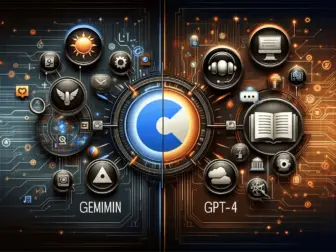Tag - AI Benchmarking
The Frontier of AI Performance: Navigating the Complex Landscape of AI Benchmarking
The Frontier of AI Performance: Navigating the Complex Landscape of AI Benchmarking
The exponential growth of artificial intelligence (AI) technologies has brought about impressive advancements across multiple domains, from healthcare to finance to autonomous vehicles. As AI systems become increasingly sophisticated, the need for robust benchmarking tools to measure their performance has never been greater. AI benchmarking is the process by which we assess the abilities of AI systems in terms of speed, accuracy, efficiency, and generalizability. This is not just a matter of academic interest; it has real-world implications for the deployment of AI in critical applications.
Benchmarking AI systems involves a series of challenges. The first challenge is the selection of appropriate metrics. For instance, while accuracy might be the primary concern in one application, in another, the focus might be on how quickly the system can learn or adapt. In natural language processing tasks, qualitative measures such as coherence and fluency are also critical. Therefore, benchmarks must be tailored to the specific requirements of the task at hand.
Another key element is the creation of comprehensive datasets that can test the limits of AI. These datasets need to be sufficiently diverse and complex to provide a realistic assessment of how an AI system will perform in the real world. They also must evolve over time to account for the rapid advancement in AI capabilities. The benchmark datasets that challenged AI systems a few years ago might easily be mastered by today’s models.
Furthermore, the dynamic nature of AI development means that benchmarks themselves can become outdated. As AI models learn to optimize for specific benchmark tests, their performance on those tests may no longer reflect their effectiveness in more generalized scenarios. This is known as overfitting to the benchmark—a situation where an AI system is tuned to perform exceptionally well on a specific test but is unable to replicate that performance in real-world tasks.
In the realm of AI benchmarking, there’s also the issue of transparency and replicability. For a benchmark to be truly useful, it must be possible for different teams to replicate the results. This requires not only access to the same datasets and metrics but also to the computational resources necessary to run the tests. Given that some state-of-the-art AI models require substantial computational power, there can be a significant barrier to entry for those wishing to participate in these benchmarking exercises.
The impact of effective AI benchmarking can be seen in competitions like ImageNet Large Scale Visual Recognition Challenge (ILSVRC), which have driven progress in image recognition technologies. Similarly, benchmarks such as GLUE and SuperGLUE have pushed forward the capabilities of language understanding models. These competitive environments foster innovation and provide a clear yardstick for measuring progress.
Industry standards for AI benchmarking are also emerging, with organizations like MLPerf offering a suite of benchmarks across various domains of AI, including computer vision, natural language processing, and reinforcement learning. These standardized tests are critical for comparing different systems and tracking progress over time.
In conclusion, AI benchmarking is a complex but essential aspect of AI development. As AI continues to evolve, the benchmarks used to measure it must also advance. This includes developing better metrics, more challenging datasets, and ensuring that benchmarks reflect real-world needs. It also requires a commitment to transparency and accessibility to maintain a level playing field where innovations can be fairly compared and evaluated. By meticulously navigating the landscape of AI benchmarking, the AI community can ensure that the development of these systems is both responsible and aligned with genuine progress.
